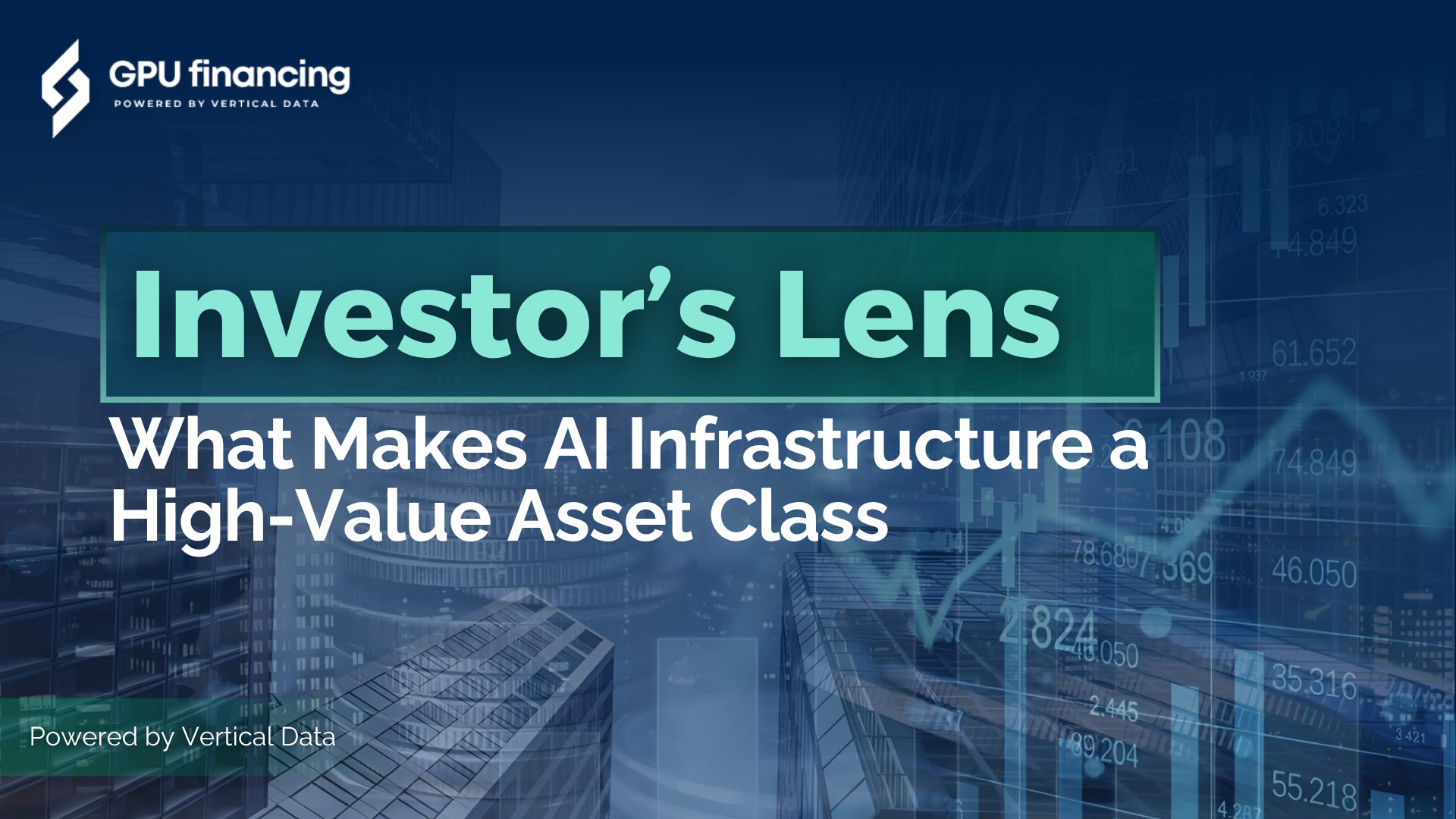Introduction
The artificial intelligence boom has created a new and compelling asset class: AI infrastructure. With investment commitments in 2025 already surpassing a trillion dollars, it is clear that data centers, particularly those packed with high-performance GPUs, are no longer just operational facilities; they are high-value strategic assets. For investors, however, evaluating these opportunities goes far beyond simply counting the number of GPUs. A sophisticated analysis is required to assess long-term value and mitigate risk.
This article examines the key factors that savvy investors are scrutinizing when evaluating AI infrastructure as an asset class.
The Foundation: Energy and Sustainability
Power is the lifeblood of AI, and an investor’s first question is often about where that power comes from and how sustainably it is used. AI-specialized data centers consume vastly more power per rack than traditional facilities, with some projections indicating that data center electricity demand could double by 2030. This puts immense strain on existing power grids and raises critical questions about environmental impact.
Investors are now looking for data centers with secure, long-term power purchase agreements (PPAs), preferably with renewable energy sources. Sustainability is no longer a marketing buzzword; it is a core component of risk assessment. Many states and local governments now tie incentives to sustainability benchmarks like LEED certification and clean energy use. An asset that relies on an unstable grid or fossil fuels carries a significant long-term risk that can impact its valuation.
The Blueprint for Growth: Scalability and Future-Proofing
The world of AI hardware evolves at a blistering pace. A state-of-the-art GPU today can be obsolete in 24 to 36 months. Therefore, investors are looking for infrastructure that is built for change. This means modular designs that allow for the seamless integration of next-generation hardware, from more powerful GPUs to advanced liquid cooling systems, without requiring a complete facility overhaul.
Scalability is not just about adding more racks; it is about intelligent design. This includes access to high-bandwidth, low-latency network connectivity and the ability to scale power and cooling capacity in tandem with computational growth. An infrastructure asset that is locked into a rigid design or a single generation of technology is a depreciating asset. One that is designed for evolution is a platform for future growth.
The Strategic Imperative: Risk, Resilience, and Geopolitics
Beyond the physical infrastructure, investors are conducting rigorous due diligence on a range of strategic risks. The AI supply chain is highly concentrated, with a heavy reliance on a few key chip designers and manufacturers. This creates significant supply chain risk, which can be exacerbated by geopolitical tensions. Investors are closely examining a facility’s supply chain resilience and its exposure to potential trade restrictions or disruptions.
Regulatory risk is another major consideration. As governments worldwide grapple with the implications of AI, new regulations around data privacy, security, and environmental impact are inevitable. An asset located in a stable regulatory environment with a clear legal framework is inherently more valuable than one in a region with a high degree of political or regulatory uncertainty. Investors are looking for assets that are not only compliant with today’s regulations but are also positioned to adapt to the regulations of tomorrow.
Conclusion
AI infrastructure has firmly established itself as a high-value asset class, attracting unprecedented levels of investment. However, the most sophisticated investors are looking beyond the immediate allure of massive GPU clusters. They are applying a rigorous, long-term lens, evaluating assets based on the sustainability of their power sources, the adaptability of their design, and their resilience to a complex web of strategic risks. In the high-stakes world of AI, the most valuable assets are not just those that can crunch the most data today, but those that are built to power the innovations of tomorrow, sustainably and securely.


